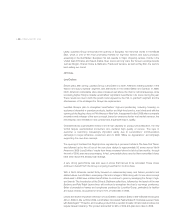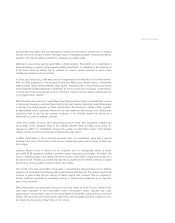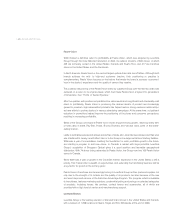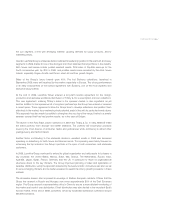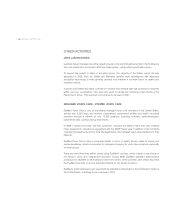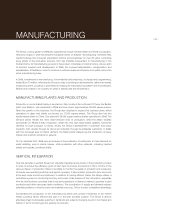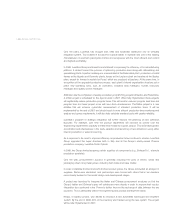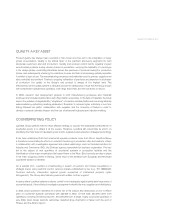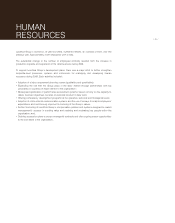LensCrafters 2006 Annual Report Download - page 40
Download and view the complete annual report
Please find page 40 of the 2006 LensCrafters annual report below. You can navigate through the pages in the report by either clicking on the pages listed below, or by using the keyword search tool below to find specific information within the annual report.>40 | ANNUAL REPORT 2006
Over the years, Luxottica has brought both retail and wholesale distribution into its vertically
integrated system. This enabled it to become a global leader in eyewear and one of the leading
manufacturers of premium prescription frames and sunglasses with the most efficient cost control
and highest profitability.
In 2006, Luxottica Group continued its commitment to improving the efficiency of its manufacturing
platform. It carried forward the process of optimizing production lines along with rationalizing and
specializing plants. Injection molding was concentrated at the Pederobba plant, production of metal
frames at the Agordo and Rovereto plants, lenses at the Lauriano plant and acetate at the Sedico
plant, except for frames in acetate for Persol, which are produced at Lauriano. At the same time, in
recognition of the upgraded production process, each plant’s internal organization structure put in
place new operating roles, such as controllers, industrial area managers, human resources
managers and quality control managers.
2006 also saw the completion of weekly production programming projects at Sedico and Pederobba.
Asimilar project is scheduled for the Agordo plant in 2007. When fully implemented, these projects
will significantly reduce production program times. This will result in reduced program lead time and
program time and fewer project errors with less stock obsolescence. The Matrix project is a new
initiative that will enhance systematic measurement of standard production times. It will be
implemented by the end of 2007 and should result in more efficient production time monitoring and
analysis and space requirements. It will also help calculate standard costs with greater reliability.
Luxottica’s program of strategic integration will further improve the planning of new collection
launches. For example, over time the product department will increase its control over the
engineering department’s capacity to make new models for a given season. This will enable greater
coordination and effectiveness in the study, selection and launching of new collections, using either
internal production or external sourcing.
As a response to its need to improve efficiency as production times continue to shorten, Luxottica
Group upgraded the buyer structure both in Italy and at the Group’s wholly-owned Chinese
production company, Luxottica Tristar Optical.
In 2006, the Group started acquiring certain suppliers of components (e.g., Bottega S.r.l., a temple
production specialist).
Over the year, procurement’s success in generally reducing the costs of lenses, cases and
packaging offset rising metal prices, including both noble and base metals.
In order to stabilize finished and semi-finished product prices, the Group conducted an analysis of
suppliers. Some were eliminated, and partnerships were formed with others that in turn became
more closely involved in the model design and development stages.
Aproject was launched to integrate the Italian and Chinese procurement structures so that the
Group’s Italian and Chinese buyers will collaborate more closely in order to improve their results.
Integration also continued in the IT area to further improve the exchange of data between the two
countries. This is particularly vital in the engineering and product development areas.
Knapp, a logistics project, was started to introduce a new automated warehouse and shipment
system. By the end of 2006, 40% of the inventory was tracked using the new system. The project
will be fully implemented in 2007.


